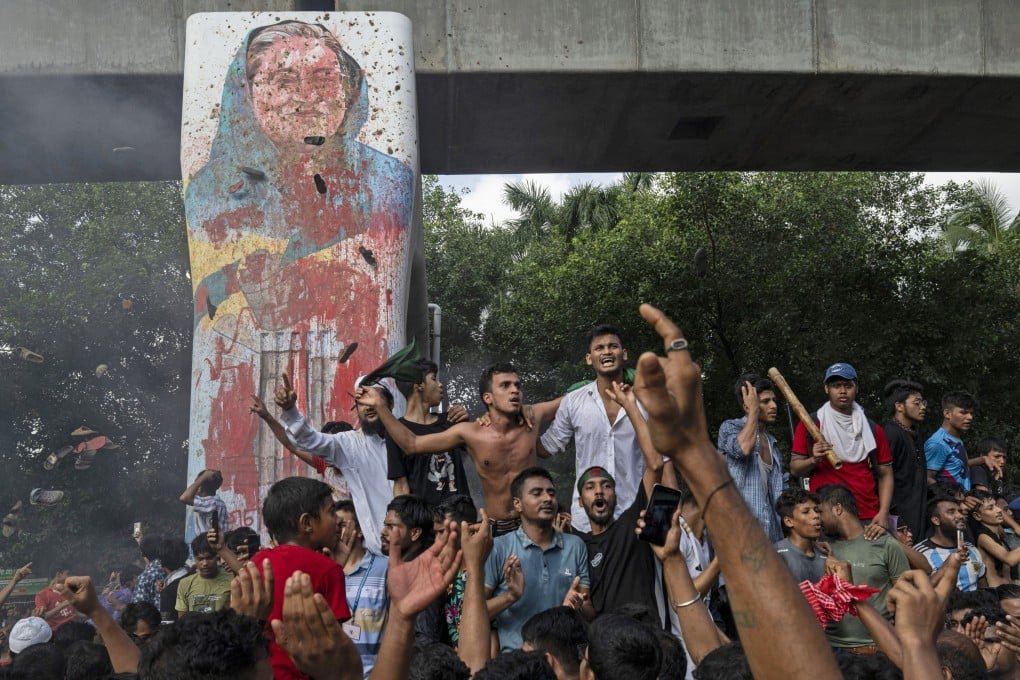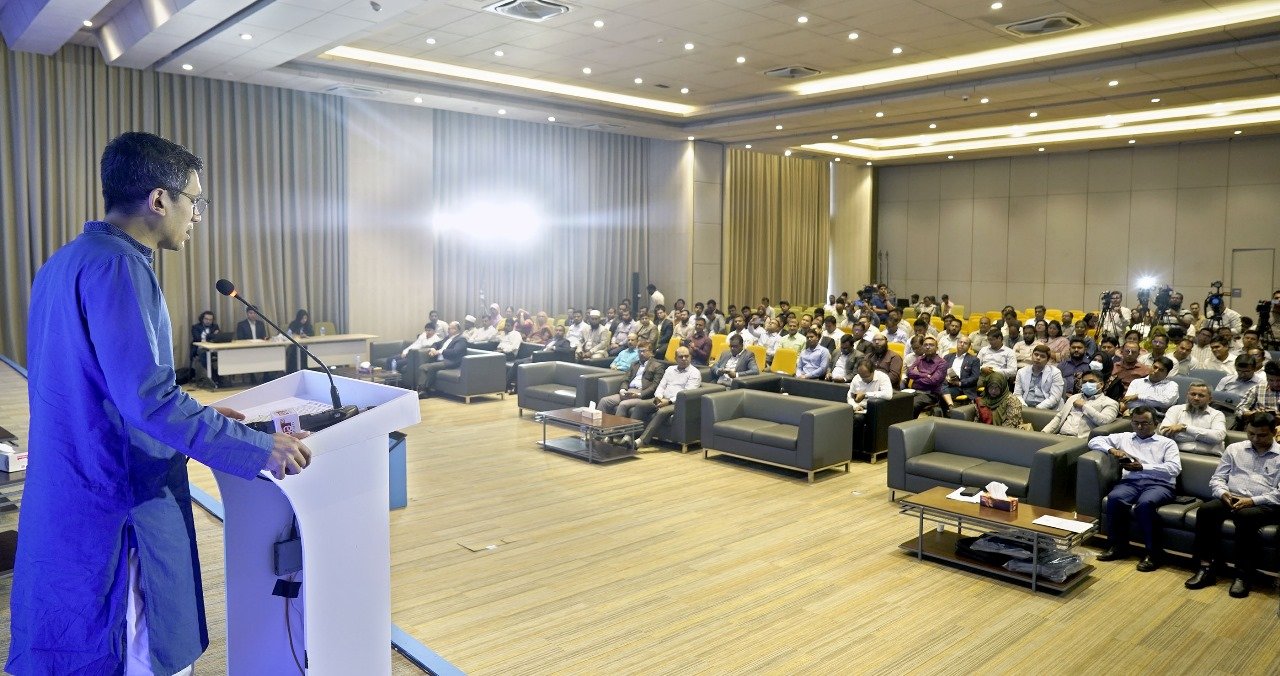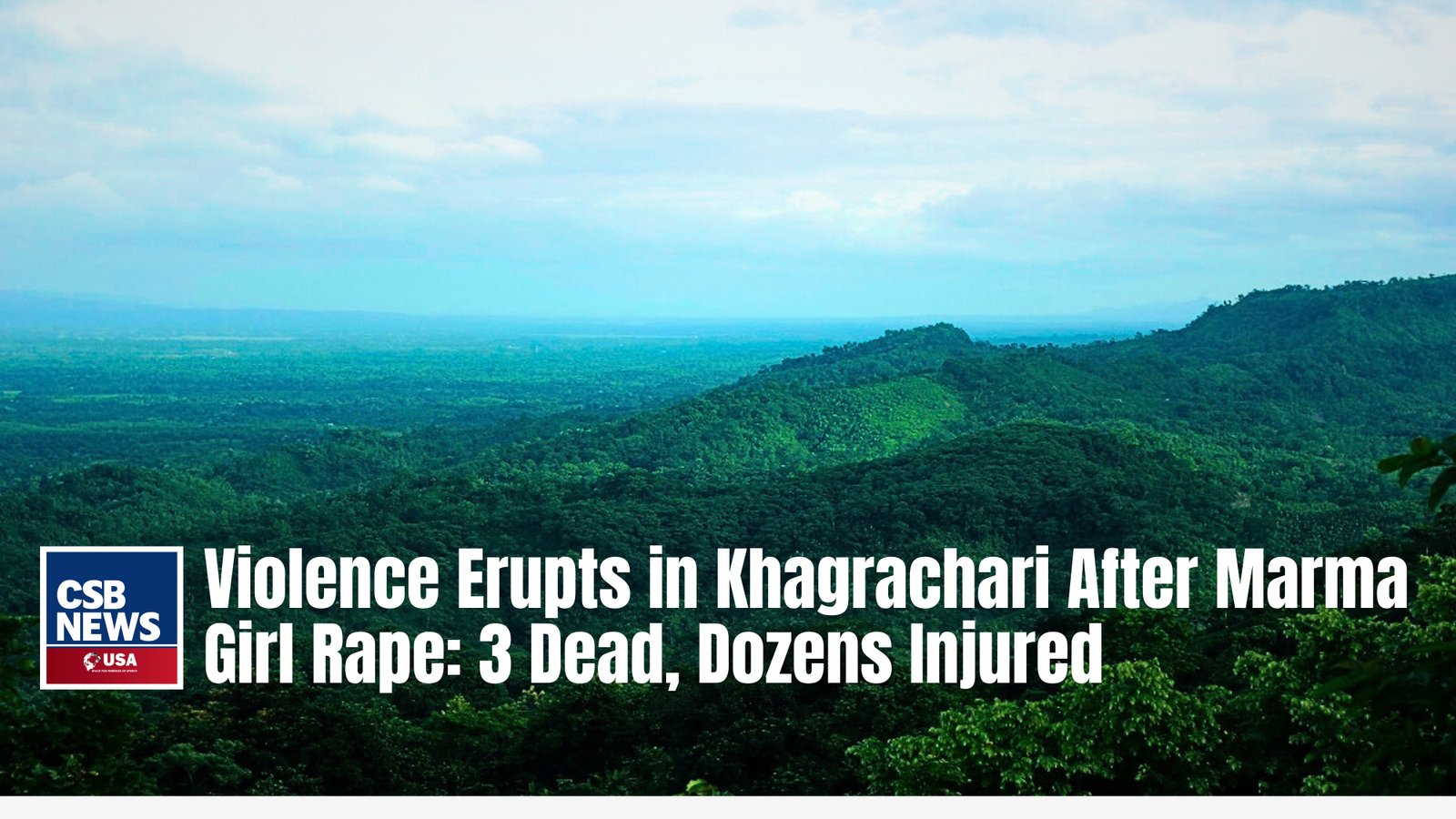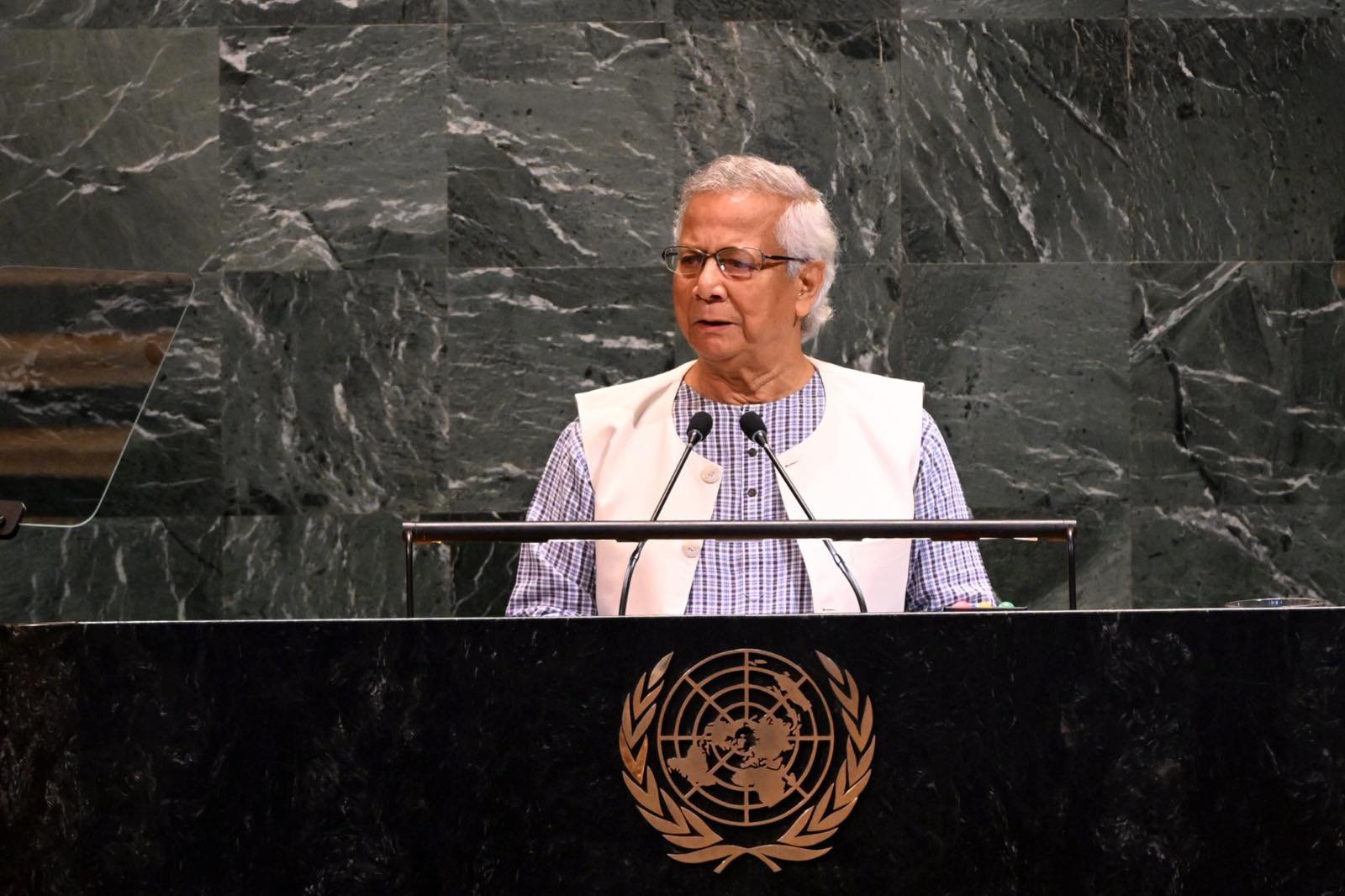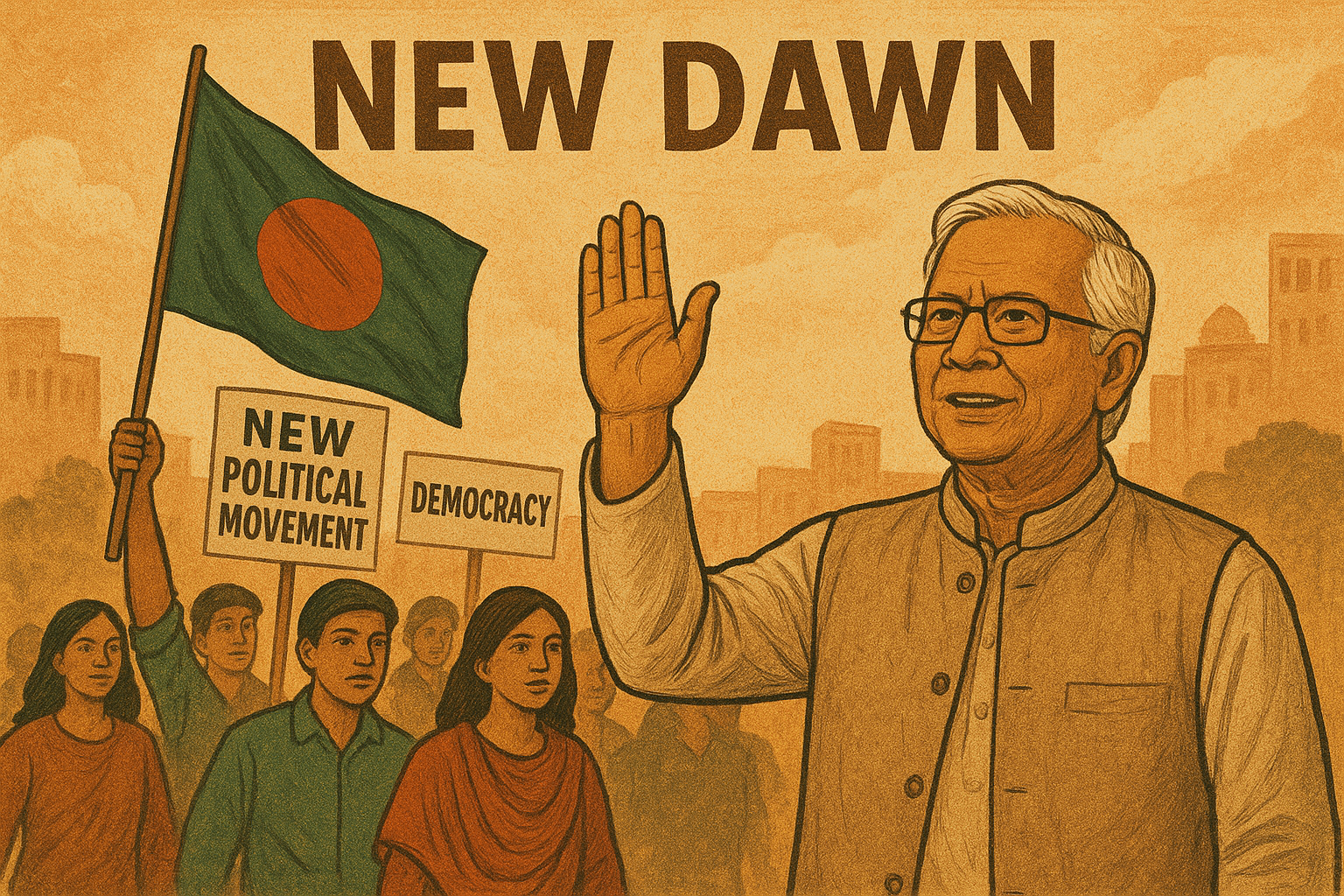Anti-Discrimination Student Movement in Dhaka-Bangladesh and the Fall of Sheikh Hasina’s Government through a Student Uprising
Amid the one-point demand for the government's resignation by the anti-discrimination student movement, a mass student uprising has led to Prime Minister Sheikh Hasina stepping down and leaving the country. This marks the end of the nearly 15-and-a-half-year rule of the Awami League. The public has taken control of the Prime Minister’s residence, Ganabhaban, celebrating jubilantly. Some took the opportunity to loot the premises. People also stormed into the Prime Minister’s Office.
Anti-Discrimination Student Movement in Dhaka-Bangladesh and the Fall of Sheikh Hasina’s Government through a Student Uprising
Anti-Discrimination Student Movement in Dhaka-Bangladesh and the Fall of Sheikh Hasina’s Government through a Student Uprising
Amid the one-point demand for the government's resignation by the anti-discrimination student movement, a mass student uprising has led to Prime Minister Sheikh Hasina stepping down and leaving the country. This marks the end of the nearly 15-and-a-half-year rule of the Awami League. The public has taken control of the Prime Minister’s residence, Ganabhaban, celebrating jubilantly. Some took the opportunity to loot the premises. People also stormed into the Prime Minister’s Office.
An interim government is now in the process of being formed, led by Army Chief General Waqar-uz-Zaman, in consultation with various political leaders. Meetings have already taken place between the President, the chiefs of the three armed forces, and political party leaders to discuss the transition. The anti-discrimination student movement announced last night that they will present the framework for the interim government within 24 hours.
According to the constitution, once the Prime Minister resigns, all other ministers, state ministers, and deputy ministers are considered to have resigned as well, leading to the dissolution of the cabinet. However, they may continue their responsibilities until a new government is formed.
Sheikh Hasina, after resigning and leaving the country, will not be returning to politics, her son Sajeeb Wazed Joy told the BBC. He said, "She is so disheartened that despite all her hard work, some people still stood against her." Joy added, "Thinking of her safety and at the family’s insistence, she left the country."
The student protest began 36 days ago, initially demanding reforms to the quota system in government jobs. It eventually transformed into an anti-government movement amid nationwide clashes and the deaths of more than 300 people, ultimately forcing Sheikh Hasina out of power. She left the country aboard a military helicopter, accompanied by her sister Sheikh Rehana. They first traveled to Agartala, India.
From there, a military aircraft took her to Hindon Airbase in Ghaziabad, near Delhi. According to NDTV, she is expected to fly to London from there soon.
Following the escalation, the anti-discrimination student movement called for a total non-cooperation movement on Sunday, centered around their one-point demand for the government's resignation. In response to the unrest, the government declared an indefinite curfew nationwide starting from 6 PM Sunday and announced a three-day general holiday from Monday to Wednesday. Banks and courts were also closed.
On Sunday, the movement announced a "March to Dhaka" program, initially set for Tuesday but later moved up to Monday. Protesters declared they would not comply with the curfew.
On Monday, as students and the public began pouring into Dhaka to join the "March to Dhaka" program, the Sheikh Hasina government collapsed. Massive crowds marched through different areas of the capital, such as Jatrabari, Central Shaheed Minar, Badda, Uttara, and Mirpur. By noon, thousands from different directions converged on Shahbagh, waving national flags and sticks. When the news of Sheikh Hasina's resignation spread around 2 PM, protestors began singing and dancing in celebration. The crowd took over Ganabhaban, waving flags in wild jubilation.
After the fall of Sheikh Hasina, Army Chief General Waqar-uz-Zaman announced the formation of an interim government in a speech to the nation from Army Headquarters around 3:45 PM.
On the second day of the non-cooperation movement and during the Dhaka-bound long march, Prime Minister Sheikh Hasina resigned, prompting General Waqar-uz-Zaman to hold meetings with political party leaders to discuss the interim government. He said, “The Honourable Prime Minister has resigned. We are now in a political crisis. An interim government will be formed to run the country.”
The Army Chief added, “We have spoken to the top political party leaders. We made proposals, and everyone agreed. We had a fruitful discussion and decided to form an interim government through which all state activities will be conducted. We will now speak with the Honourable President to finalize matters.”
Public Celebration at Ganabhaban
News of Prime Minister Sheikh Hasina’s resignation had already spread. Then the ISPR announced that the Army Chief would address the nation. Meanwhile, people started marching towards Ganabhaban. Entering through the western gate, the public entered without resistance. As the Army Chief confirmed the resignation in his speech, a flood of people from various parts of the city headed to Ganabhaban. Roads like Asad Gate, College Gate, Manik Mia Avenue, Bijoy Sarani, Mirpur Road, and Farmgate became overcrowded. Streams of people also came from Uttara, Mirpur, Mohakhali, Banani, and Badda. Eventually, some of the crowd was seen leaving Ganabhaban carrying furniture and items like poultry, televisions, flower pots, buckets, meat, ceiling fans, air conditioners, chairs, sofas, clocks, routers, papers, and computers. Some even transported heavy furniture on rickshaws and vans. They claimed, "Ganabhaban now belongs to the people. We are taking what is rightfully ours."
Near Asad Gate on Mirpur Road, some young men were handing out sugar. One of them told this reporter, “This is Ganabhaban’s sugar. We are celebrating today’s victory with sweets.”
Many filmed the occupation and posted videos on Facebook. In one video, some people were seen entering Sheikh Hasina’s bedroom, declaring, “Ganabhaban is under our control.” Another video showed people eating in the kitchen. Protesters also swam in the swimming pool inside Ganabhaban.
During this celebration, the Awami League office in Mohammadpur Town Hall was looted within minutes. From Manik Mia Avenue, people could see crowds gathering near Parliament House. Smoke was everywhere. When asked why, it was revealed that the Speaker’s residence had been set on fire. Around 4:30 PM, some people vandalized the sculpture ‘Mrityunjay’ of Father of the Nation Bangabandhu Sheikh Mujibur Rahman at Bijoy Sarani.
Due to the massive crowds, traffic came to a standstill. People in cars or on motorbikes were stuck for hours. In places like Mohakhali and Kakoli, vehicles were searched by protestors to check if any ruling party members were fleeing. Motorcyclists were told not to wear helmets. When asked why, protestors said it was to avoid confusion with the helmeted attackers of students during past crackdowns.
After Ganabhaban, protestors also took over the Prime Minister’s Office in Tejgaon. There, too, celebrations erupted. Some chanted slogans demanding Sheikh Hasina’s trial, and some carried away furniture from the premises.
Sheikh Hasina: A Rise and Fall
The Awami League formed its first government in independent Bangladesh under the leadership of Bangabandhu Sheikh Mujibur Rahman, following a bloody war of liberation. After his assassination along with most of his family in August 1975, the government fell. His daughter Sheikh Hasina returned to power 21 years later, forming a government in 1996. After winning again in the 2008 elections, she remained in power for 15 consecutive years. Despite controversies, she retained power through the last three elections. But this time, a mass uprising has forced her to resign and leave the country.


